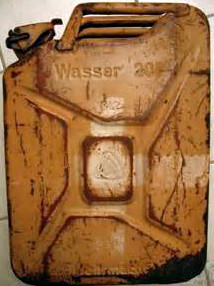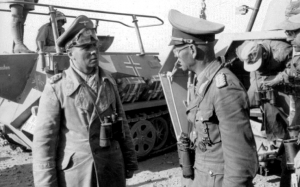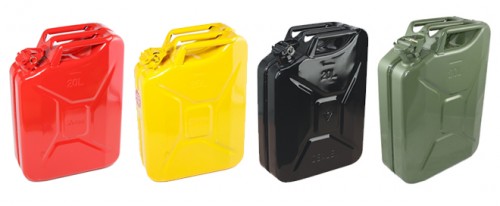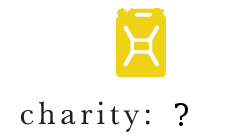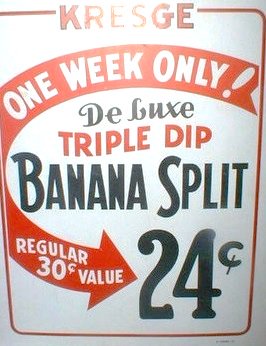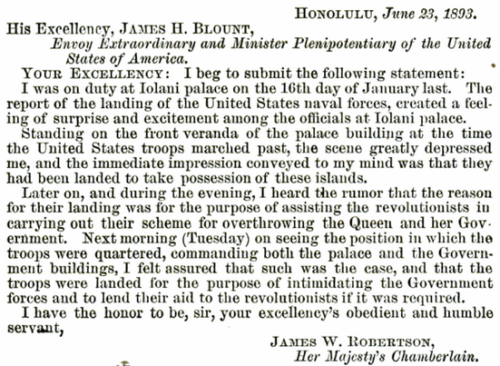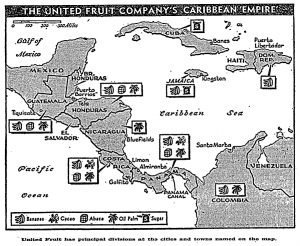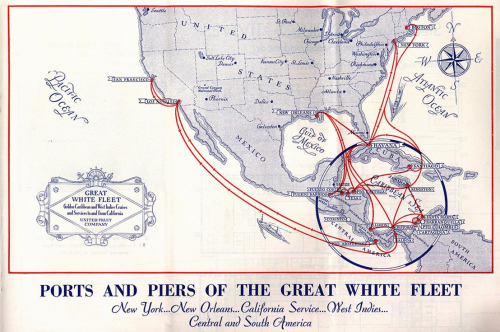Part two in a three part series:
- Part one: Introduction – Why 1936?
- Part three: Reprint of a first-person account called “The Little Can That Could“
- Part four (bonus!): Why Charity Water Wells May Be Worse For Women Than Long Walks With Cans
Once upon a time I sailed half-way across the Pacific Ocean with the typical yellow fuel can lashed to the deck.
The yellow Jerry can has specific meaning to me — diesel fuel — which I thought was a standard. Yet recently I found a charity worker showing me yellow cans of… water with smiling children, as they asked me to donate funds.
Stock photos of happy smiling children, poor children, playing with yellow cans; this looked weird to me. I wanted to see charts of health and safety data from operations, not ignorance of toxicity from unsafe oil handling/disposal.
Flashy photos provided questionable value to me, or the opposite…made me curious about what might really be lurking beneath such shallow propaganda.
Is this really any different than children miners (minors) grinning through the toxicity of their forced labor environment?
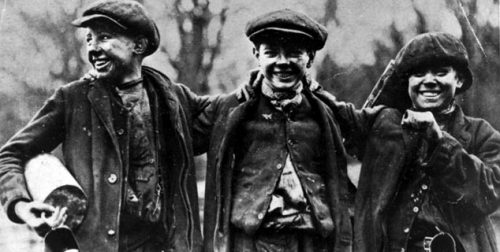
Yellow cans in obviously staged photos seemed to be encouraging me to accept that children using them for water is some kind of acceptable normal. In fact the unsettling appearance of a fuel can in the hand of smiling children supposedly can be seen “everywhere”, as they have written without irony:
You’ve seen it everywhere on our site, at our events, on our shirts… tattooed on our arms… and although the Jerry can has become a mainstay for our staff and supporters, we want to let you know what it actually is and why it’s a symbol of the charity: water mission.
The diesel can a symbol of a water mission? “Our site, our events, our shirts, our arms”. Note the emphasis on “our” mainstay, rather than a mainstay of the people being helped. My definition of everywhere is a bit broader. Is this a mission to convince staff and supporters that a yellow can should become a symbol of water or that it already has? Because…why?
Something smelled funny. Globally I had learned in my travels, regardless of continent or sea, yellow cans meant one thing, and it was NOT water. Yellow often is used for warning signs; first-hand experience around the world has associated yellow cans with sickening slicks and fumes of poison.
Red gasoline cans, yellow diesel cans. Those are the ones you DO NOT DRINK from let alone touch and breathe. Often we would end up scrubbing and wiping the nearly permanent mess of petroleum around those cans.
And yet, because standards change, I still am open to be convinced otherwise if someone can show data.
Surely there are cases (no pun intended) where options are limited, and people have to make do with what little they have. Reuse of fuel cans for water? Sounds like an indicator of desperation or lack of regulation. Is this evidence of the need for many more white or blue cans?
Globally white and blue are used to symbolize health and safety (e.g. Blue Cross, Blue Shield, U.N. Department of Peacekeeping Operations blue hats and helmets, as well as the white helmets with blue suits of disaster relief workers)

I mean we are talking about a charity here, where setting a new standard of good is supposed to be the mission, especially where health risks are found. For a charity with wealthy backers and industrial input the choices obviously are many, so the standard should be high. There is great risk in using charity to reinforce harmful behavior.
Confused by charity workers flashing smiling kids in your face to get your money? Me too.
How did someone decide, of all the options, to adopt yellow cans as a sign of health, a symbol for “clean” anything? And why are they just showing stock photos to get donations instead of any real data?
What comes next, bright red oil barrels for charity:meal?
Let’s forget I asked that…although to be fair red in this case could make sense to warn people about heat and to stay away from the barrels.
I searched for answers and some history on can safety. Either I would become convinced that it now is safe for people to drink from yellow cans, and it is safe to give this charity money, or that existing standards need to be defended and propaganda exposed.
My search led to some very interesting surprises.
The charity website reduced my confidence in their ability to collect and analyze data, for example. You might say my opinion worsened as I read through apologetic narratives about Nazi Germany.
Here are four examples, paragraph by paragraph, of what I found and why this charity is so wrong:
To most people, this simple metal or plastic can means ‘gasoline,’ and rightfully so — the first Jerry cans were introduced as gasoline containers by the German military at the start of World War II.
There was some kind of war, a second world war, and this military from Germany that had to go to war also had some need for gasoline, see…
False.
Jerry cans existed during the Spanish Civil War of 1936, years prior to the start of WWII. These cans served both as fuel and water containers, which we know because they were stamped with clear markings for their purpose.
Germany was involved with and supported other fascist militarism. Someone within the growing Nazi war machine was looking at how to improve a fuel can long before Hitler mobilized troops on 15 March 1938 (passive capitulation of Czechoslovakia) or 1 September 1939 (1.5 million marched into Poland, conquering 140 miles in just one week).
I believe the real story goes to lessons in vehicle support and supply containers (e.g. evaporation/expansion) derived from Italian invasion (3 October 1935) of Ethiopia and there is evidence cans were modified and tested during Nazi support for fascists in the Spanish Civil War (17 July 1936).
Handling chemicals in extreme conditions had forced Italy and Spain to innovate their cannister technology. For example the Italians had developed new mustard gas and new bombs to drop on hospitals and ambulances flying the red cross (infamously killing Swedish medical leaders Fride Hylander and Gunnar Lundström).
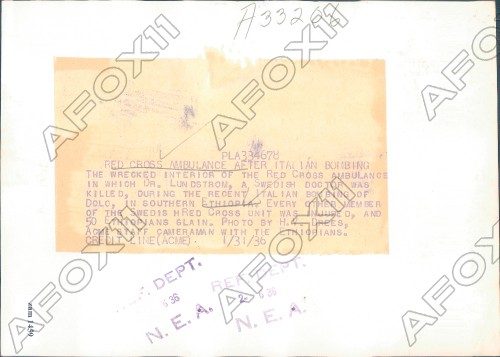
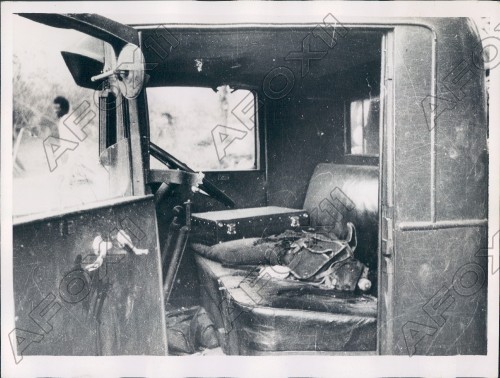
This day is still called “darkest in the history of the International Red Cross“; worth reading if you want to get a sense of how in 1936 a rapidly expanding fascist offensive led to a quickening pace of technology change.
Does the can mean gasoline? The phrase “to most people” used by this charity indicates they have some kind of data or source to check, yet none is provided.
I would say to most people the Jerry can means more than gasoline. It means a variety of fuels and even water. My data on this is based on search engines where the top results are “Jerry Cans – Fuel, Water, Diesel, & Accessories” and “can be used for fuel and drinking water”. The word gasoline does not come up easily.
It is true that 1930s Germany used gasoline for their vehicles. However even they stamped their fuel cans with the generic word Kraftstoff (fuel) or with Wasser (water). The Wasser cans also were painted with broad white lines to ensure it could not be confused with Kraftstoff.
This says to me that today’s use of yellow color on a can would, like the Nazis originally intended, help differentiate unsafe fuel cans. Here is what a Nazi water can, stamped with Wasser and painted with white lines, looks like:
So to most people I think it fair to say the Jerry can means various liquids, not simply gasoline, and most people expect consistent symbols and use to avoid mixing them.
Moving everyone to think of yellow as safe for water seems doable, although expensive and risky, as it really has to be clear where diesel and water are to be found. It seems like a lot of extra work/cost because of confusion, as a friend recently put it:
Whoever made the almond-milk carton the exact same shape as the chicken-broth carton should have to eat this cereal.
Labeling/testing yellow Jerry cans on a massive scale as safe for water seems much, much more complicated and risky than just continuing to use the existing standard of white or blue water cans.
These five-gallon cans, also called ‘Jeep cans’ or ‘blitz cans’ (or, in Germany, ‘Wehrmachtskanisters’) were made of steel and usually sat in the back of vehicles as a reserve tank of gas.
In Germany there were these things with a funny German name in the back of vehicles, kind of like a Jeep, used for an afternoon blitz…
Misleading.
Wehrmachtkanisters means “army can”. Fascists who initiated war without provocation strapped multiples of cans to the side of their vehicles during invasions of foreign countries. In theory the blitzkrieg (German for “lightning war”) was a strategy of very brutal and fast advances to rout an enemy before they could respond.
Obviously there is less surface area in back (width versus length of a vehicle) so lashing cans to the sides has many advantages: leaves space available and makes use of open spaces, balances weight more evenly, while keeping nasty toxic fuel away from doors, passengers and gear. Use of the sides also means the back can be used for less durable/convenient assets and for giant doors and loading (e.g. troop deployment from trucks).
You may notice the white broad lines on some cans, clearly indicating Wasser instead of Kraftstoff.
You will find the same behavior on a boat that has to cross an ocean, as you saw at the start of this story. Reserve cans are balanced on either side, not in the back. It would be stupid to weigh down the back of a vehicle/boat with a dozen cans when sides are empty.
Now lets talk about gallons. Jerry cans are 20L capacity and stamped with this unit — about 5.28 US gallons or 4.40 UK gallons. Jerry cans were not “5 gallons” as Charity:water seems to believe. I find it very odd an international organization would use gallons, let alone not specify a system of gallons. Liters are the original and obvious measurement. Someone thinking in gallons has imposed a very narrow and inaccurate perspective over reality.
In terms of material the cans were not only steel; what made Jerry cans most notable in terms of material was a synthetic lining unlike other metal cans. Plastic cans, or even kevlar-lined battle containment for fuels, today could perhaps be linked to the synthetics of the Jerry can.
In terms of brand association, Jerry cans weren’t used by Jeeps until many years later. I am not sure why Jeep gets brought in so subtly next to “blitz cans”. It strangely brands a pre-existing can with a trademark of a specific American vehicle despite the cans not being developed for it originally and being used much more widely. Perhaps Charity:water is thinking ahead about the power of branding and hopes someday we’ll call them Charity:cans?
Speaking of American trademarks, “Blitz” reminds me of a sad and strange twist in history. As I explained above the word means lightning in German; a military campaign tactic attributed to the Nazis. It also refers to a specific 1940 bombing campaign meant to demoralize the British by killing civilians and destroying industry. Not the best connotations. With that in mind an American manufacturing company made the odd decision to adopt it as a name for their “improved” version of Jerry cans.
Originally a US metal container company that made Jerry cans in the 1940s used the words “metal container” in their name. They grew so large and successful that 50 years later the vast majority of American fuel cans were made at this “U.S. Metal Container” (UMC) company. When UMC moved its production away from metal to making only plastic cans in the 1990s they changed their name.
Instead of just switching to the acronym UMC, which would have been clever and celebrating American military history, they adopted the infamous Nazi term “Blitz” as their name because, well, UMC was located in Oklahoma. It should be no secret that neo-nazis and Hitler apologists lived an open life in Oklahoma. But I digress…
Anyhow after changing its name to the Nazi “Blitz” and moving everything to plastic production this venerable Jerry can manufacturer (that perhaps even helped defeat Nazi Germany) soon filed for bankruptcy.
“Blitz” said it could not survive the dozens of lawsuits over its defective cans that were exploding and killing Americans. I told you there was a twist.
It’s said that Adolph Hitler anticipated the biggest challenge to taking over Europe in WWII was fuel supply. So Germany stocked up.
False and super annoying.
Look, this is very wrong for many reasons. I don’t expect to read charitable thoughts on Hitler from a supposed “charity” site. WTF. No really, WTF.
Also I find “it’s said” to be an unacceptable start to a pro-Hitler sentence that lacks any citation. Who said Hitler anticipated…what? Hitler was an insane dictator and deserves no glorifications. I should not need to cover this.
Nonetheless, it is easy to see how badly that fascist leader sucked at planning. The USAF points out he took his country to war with an acute fuel shortage and massive dependence on imports:
At the outbreak of the war, Germany’s stockpiles of fuel consisted of a total of 15 million barrels.
That is basically nothing, given their rate of consumption, and fuel was expected to run out by 1941. Two years after starting the war, stupid Hitler lacked a plan to continue supplying fuel. Cans clearly were not meant to solve the macro challenge. The American pro-fascist company Standard Oil played an essential role in illegally supplying fuel to Hitler’s air-force even as it was bombing London, which arguably had far greater impact than any container holding that fuel.
Actually I’m getting ahead of myself. Assuming a rapid assault that would last only a few weeks or months then yes, perhaps, a large stock of cans would be decisive in lieu of actual fuel supplies. However, anyone anticipating the “biggest challenge” would have probably considered campaigns getting bogged-down or stuck and contemplate future fuel origination options beyond a better container to move it around in.
It makes far more sense to me that some middling Nazi official was eager to solve a small and obvious part of logistics that they were focused on. There was a little fuel distribution problem, they saw it in 1935 or 1936 fascist invasions, and they set about a new can design. Even translating that into a massive pile or distribution of their cans does not equate to truly anticipating the major issues ahead.
I mean of course fuel did not pose the “biggest challenge” to taking over Europe.
This claim is so absurd I don’t even know where to begin. Put it in reverse perspective: having solved fuel supply alone would not have won the war for the Axis. It was not the single deciding factor. It was a factor among many, with the other factors often being far more in focus and difficult.
A Hitler “anticipation” theory simply does not fit with one of the greatest fuel blunders of all time, Operation Barbarossa, to violate borders to the East. Consider that in this operation alone more than 600,000 Nazi horses were relied upon in 1941. That’s because a full 75 percent of the German Army relied on horses for transport in WWII.
Vehicle logistics totally failed. That’s right. HORSES.
There were absurd Nazi problems from lack of standardization, split and confused leadership and unrealistic (arguably insane) ideas of a “lightning” fast victory that quickly undermined an overstretched and flimsy supply chain doctrine. And this was after the 1940 “Blitz” against London already had failed its objectives despite America’s Standard Oil constantly re-fueling the bombers.
The simple fact of history is that from June to December 1941 the result of Nazism’s brutal stupidity was “half-starved and half-frozen; out of fuel and ammunition.”
Thus, Nazi leadership represents forever the exact opposite of anticipation and stocking up early. Blitz really translates into blundering into something without a plan and then committing suicide to avoid accountability. (See example two, above)
As Germany moved through Europe and North Africa, so did their thousands of gasoline cans. These cans proved to be dependable and durable; soon, countries all over the world were adapting them to haul and store liquids, coining them ‘Jerry cans’ because of their German origin (‘Jerry’ was a snide name for a German WWII soldier). New water container designs emerged but nothing could top the strength and simplicity of the original rectangular, X-marked Jerry can.
False.
Obviously there were more than thousands of cans. The discovery of the Jerry can did not lead directly to adoption by the Allies. I sense some odd reverence for Nazis, even to the point of trying to apologize for “snide” names. Snide? Is this a concern without context? War against fascism, let alone against genocide, perhaps invites derision?
“Jerry” actually was a term used by Allies during WWI supposedly because the German helmet resembled a British jerry (chamber pot). In that sense a Jerry can is actually still a reference to its contents being toxic or at least unpotable.
As far as “new water container” designs I must again point out the original Jerry can also was used for water, with a designated stamp on the can to differentiate from fuel cans as mentioned above.
So with all that nonsense from Charity:water set aside, let me turn to an actual history of the yellow Jerry can. This is perhaps how I would update their page.
RECOMMENDATIONS FOR A REVISED TEXT
Jerry cans improved greatly upon prior cans, yet are quite simple in retrospect — better durability and portability. This can be explained with a couple short stories from the Allied perspective on winning WWII.
Durability
Paul Pleiss was an American engineer in Berlin who in 1936 had discovered a new can while planning to take a huge road trip (see part three of this series). He quickly realized its benefits first-hand. After his road trip, Pleiss spent the summer of 1939 to the summer of 1940 trying to convince the US military to adopt a new can.
American leadership was reluctant, without evidence or proof; they saw no need to alter current production. Only after Pleiss brought a can to show in person and demonstrate, and after the US considered field reports and shortcomings in their North Africa campaign (similar to the experiences of Italy during the 1935 invasion of Ethiopia) did the Jerry can come into better reception.
Things really shifted in 1942 when field qualitative reports backed by quantitative evidence showed US leaders that nearly half of fuel in Egypt was lost due to can failure. Despite sizable impacts while destroying fascists and freeing Africa, as recorded in desert battle outcomes in the preceding years (i.e. Wavell 1940, Auchinleck 1941, Montgomery 1942), measured data is what really hit home for the Americans.
…we sent a cable to naval officials in Washington stating that 40 percent of all the gasoline sent to Egypt was being lost through spillage and evaporation. We added that a detailed report would follow. The 40 percent figure was actually a guess intended to provoke alarm, but it worked. A cable came back immediately requesting confirmation.
So six years after Italy’s campaign in Ethiopia had led to German army equipment design changes, the US reached the same conclusions — fighting in North Africa needs a good fuel can.
Portability
The British appear to have ignored can design during the 1936-1939 innovation period. At the start of WWII hostilities a “flimsy” can prone to failure and mess was the UK standard. Still a better Jerry can design only came to light for them in the aftermath of French General Gamelin troops withering in 1940, leaving Britain alone to fight the Germans.
An over-extended and fragile but fast German blitzkreig had led to more careful British study and eventual realization that fuel portability had surely impacted performance. Another example, a similar study of the impact of new technology, was the use of radios by German tanks to update plans with “agile” development (peer communication) instead of waterfall (from the top).
The better containers meant much faster deployments. For example a can with a single handle is inferior to multiple handles when considering a line of soldiers trying to “bucket brigade”. Side handles meant two people could grab a can at the same time, or a single person could grab two with one hand. Faster can opening times mattered, as did less spillage during fuel transfer.
The German designer
Put the British and American realizations together and you get what I believe to have been the same thing that happened to the Germans in November 1936. An Italian invasion into northern Africa sparked the need for improvement, which then was tested during war in Spain.
Someone in Nazi Germany’s military administration invited Vinzenz Grünvogel of Müller to apply for a “Wehrmachtskanister” contract. Given the prior work of Müller with Ambi-Budd Presswerk (German for “pressed metal manufacturing”) the Jerry can method of manufacture probably was a derivative more than a novelty.
So it was with the 1936 Italian vehicles crossing rough African territory in mind that led to these specifications:
Portability
- 465mm tall
- 340mm wide
- 20L capacity
- 4kg dry weight
- easy to stack
- easy to manufacture (two plates pressed)
- easy to carry (one soldier = two full, four empty) +
(two soldiers = three for bucket brigade speed of transfer)
Durability
- shock (recessed welds)
- corrosion (synthetic lining)
- float (air pocket “bump”)
- pour (short spout)
- seal (cam with lock)
- expand (50deg max)
From the list and field experience it should be easy to see why the design has lasted.
Ultimately the cans were manufactured by dozens of companies subjected to Axis rule (Müller, Presswerke, Metalwerk, Nowack, Fischer, Schwelm, etc) and after 1942 by many other companies.
Symbols and markings
Lets go back to the idea of keeping people safe from toxic contents. As I mentioned the Germans stamped cans with “Wasser” (water) or “Kraftstoff” (fuel).
Despite a stamping process there also can be found a white W to indicate “winter” fuel (Winterkraftstoff) on later cans. This reiterates the importance of clear labeling to the original designers. It also points again to a lack of overall planning and preparation mentioned above (Hitler apparently refused to believe war would last into winter).
And that brings us to the creation of the yellow Jerry cans, a warning color for fuel. How should cans with different contents safely be identified? Is there a standard?
The answer is yes and no. Standards tend to evolve. Generally they have run something like this.
Traditional
- Gasoline – Red
- Diesel – Yellow
- Drinking water (potable) – White
- Alt Fuels (Kerosene, JP Jet Fuel, Heli, M1 Meth, etc) – Blue
- Non-potable water – Green
Modern (e.g. 2005 California):
- Gasoline – red;
- Diesel – yellow; and
- Kerosene – blue
A typical set of Jerry can color options today:
CONCLUSION
Does red look better with your shoes than green? Should we use colors for fashion sense not functional safety because of toxic chemicals?
As far as I can tell standards of color were centered on safety and clarity. Charity:Water uses yellow cans because fashion, and probably convenience, not because of grounded concerns about health and finding the best solutions. I mean has anyone studied the impact of using the correct color cans for water versus reinforcing use of yellow cans? Definitely did not find that on the charity site.

A water charity adopting a yellow can makes about as much sense to me as saying people in need drinking contaminated water should keep doing it because tradition. I’d just drop the color, if I were advising them. It is easy to switch a logo from solid yellow to white, especially since white cans conform to traditional safety standards.
Again, I want to be clear I am not opposed to change or redefinition of standards; here is a clever new white Jerry can:
My concern is with a charity pushing a global campaign that uses a dangerous/toxic liquid indicator as a symbol of clean water. Something seems odd about that decision.
Starting from my basic gut instinct it seems counter-productive to a charity objective to use confusing health/danger symbolism. This especially feels true for a charity that knows how to use imagery for power because they spend money to orchestrate images of smiling children. Moving to deeper analysis I found a very weak grasp of history, a whitewash of Hitler and the Nazis; this group asking for money may be seriously divorced from reality or real facts on the ground about social impact.
More on that…another day.
If you have made it this far (thanks!) you’re ready for a pop-quiz:
Given this typical image showing the various Jerry can colors…
…what word would you put after the word “charity”?
Feel free to put your answer in the comment section below.
Go back to part one or continue to part three in this series…



